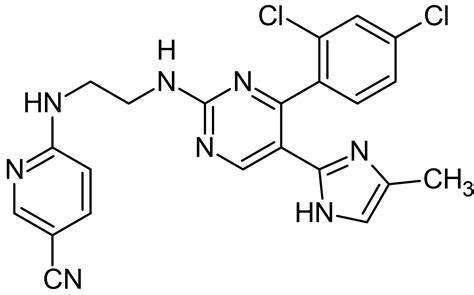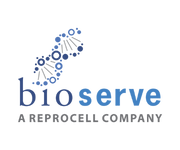
Unlock the Potential of Stem Cell
Research with CHIR99021
Introduction to CHIR99021
CHIR99021 is a remarkable small molecule compound that has become indispensable in stem cell biology and regenerative medicine. Acting as a selective inhibitor of glycogen synthase kinase 3 (GSK-3), CHIR99021 demonstrates a high affinity for the GSK-3β isoform. GSK-3 is a crucial serine/threonine kinase involved in various cellular pathways, making CHIR99021 a vital tool for researchers.
Molecular Name: CHIR99021
Alternative Names: CT99021
CAS Number: 252917-06-9
Chemical Formula: C22H18Cl2N8
Molecular Weight: 465.3 g/mol
Purity: ≥ 95%
Chemical Name: 6-[[2-[[4-(2,4-Dichlorophenyl)-5-(4-methyl-1H-imidazol-2-yl)-2-pyrimidinyl]amino]ethyl]amino]-3-pyridinecarbonitrile OR 3-Pyridinecarbonitrile, 6-[[2-[[4-(2,4-dichlorophenyl)-5-(4-methyl-1H-imidazol-2-yl)-2-pyrimidinyl]amino]ethyl]amino] (9CI)
Physical Appearance: A crystalline solid

Mechanism of Action
CHIR99021 enhances stem cell pluripotency by inhibiting glycogen synthase kinase 3 (GSK-3), a key regulator in the canonical Wnt signaling pathway. Normally, GSK-3 phosphorylates β-catenin, marking it for degradation. By blocking GSK-3 activity, CHIR99021 prevents β-catenin degradation, allowing it to accumulate in the cytoplasm and translocate to the nucleus. In the nucleus, β-catenin acts as a co-transcription factor, activating genes involved in maintaining stem cell pluripotency and self-renewal. This activation of Wnt signaling by CHIR99021 mimics the effects of Wnt ligands, promoting the expression of pluripotency markers and suppressing differentiation cues. Consequently, CHIR99021 is widely utilized in stem cell research to sustain the undifferentiated state of embryonic stem cells and induced pluripotent stem cells, offering a powerful tool for studying stem cell biology and potential applications in regenerative medicine[BA1] .

Applications in Stem Cell Research
CHIR99021 is widely used in stem cell research for the following purposes:
Promote Self-Renewal: It enhances the Wnt/β-catenin signaling pathway, promoting the self-renewal of embryonic stem cells (ESCs) and induced pluripotent stem cells (iPSCs).
Maintain Pluripotency: CHIR99021 helps maintain stem cells in an undifferentiated state, ensuring high-quality, undifferentiated cell populations.
Guide Differentiation: It is utilized to guide stem cells into specific lineages, aiding in the study of cellular differentiation.
Therapeutic Applications: Its versatility makes it an invaluable tool for developing potential therapeutic applications in regenerative medicine.
CHIR99021 in Cancer Research
Beyond stem cell research, CHIR99021 has significant applications in cancer biology. By modulating Wnt signaling, it can influence the behavior of cancer cells, making it a valuable asset in cancer research and potentially opening new avenues for cancer treatment.
Preparing CHIR99021 for Use
To prepare a 10 mM stock solution of CHIR99021:
- Reconstitute 2 mg of CHIR99021 by adding 429.8 µL of pure DMSO.
- Heat the mixture to 37 °C for 3–5 minutes to ensure complete solubilization.
- Prepare appropriate-sized single-use aliquots to avoid freeze-thaw cycles and store them at –20°C, protected from light. Ensure the DMSO concentration in culture does not exceed 0.5%.
Usage in Cell Culture
When using CHIR99021 in cell culture:
- Thaw aliquots at 37 °C as needed.
- Prewarm the cell culture media before adding the reconstituted compound to avoid precipitation.
- Mix and filter the media through a 0.2 µm low protein-binding filter.
About REPROCELL
REPROCELL, a leader in stem cell research products, offers Stemolecule™ CHIR99021, ideal for stem cell culture and manipulation. Each lot is rigorously tested for purity and toxicity towards stem cells. REPROCELL’s commitment to quality and innovation ensures that researchers have the best tools available for their work.
Conclusion
CHIR99021 is a potent and versatile tool in stem cell biology and regenerative medicine, with applications extending into cancer research. Now available on Bioserve.in, this compound is set to empower researchers in India to make significant strides in their fields.
References
- David, B et al. Selective Glycogen Synthase Kinase 3 Inhibitors Potentiate Insulin Activation of Glucose Transport and Utilization In Vitro and In Vivo. Diabetes; 52 (3): 588–595 (2003)
- Wang, B. et al. A highly selective GSK-3β inhibitor CHIR99021 promotes osteogenesis by activating canonical and autophagy-mediated Wnt signaling. Front Endocrinol (Lausanne). 13: 926622. (2022)
- Tata Purushothama Rao and Michael Kühl. An Updated Overview on Wnt Signaling Pathways. Circulation Research 106:1798–1806. (2010)
- Susanne J. Kuhl and Michael Kuhl. On the role of Wnt/β-catenin signaling in stem cells. BBA-general subjects Volume 1830, Issue 2, Pages 2297-2306. (2013)
